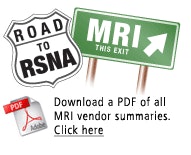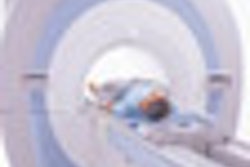Looking back over the past year, MRI continued to make strides across a wide range of clinical applications, giving physicians, clinicians, and radiologists more insights into a number of diseases and human conditions.

For that matter, MRI was superior to mammography for evaluating response to neoadjuvant chemotherapy for breast cancer, according to the early results of a trial from the University of California, San Francisco and nine other academic centers in the U.S.
Dynamic contrast-enhanced (DCE) MRI and diffusion-weighted (DW) MRI also exhibited prowess in detecting heterogeneous early tumor response to head and neck radiotherapy. The findings of a prospective pilot study also suggest that DCE-MRI and DW-MRI potentially could guide dose escalation during treatment of refractory high-risk disease.
Interest in 3-tesla MRI also continues to grow, despite a tightening market for capital equipment. Researchers in 2008 found that 3-tesla MRI outperformed 1.5-tesla MRI in a direct comparison of brain lesion characterization, tissue contrast, and imaging artifacts. Three-tesla MRI correctly identified lesions in 88% of the cases analyzed, compared with 74% accurate identification for 1.5-tesla MRI.
And, functional MRI may be the key that unlocks contents of the human brain to show why some people are so good at multitasking and others are less adept at juggling daily chores.
With MRI technology advancing rapidly, RSNA 2008 is bound to provide a look into the future and the growing utilization of this modality. Here are some of the products to be on display in Chicago.



.fFmgij6Hin.png?auto=compress%2Cformat&fit=crop&h=100&q=70&w=100)




.fFmgij6Hin.png?auto=compress%2Cformat&fit=crop&h=167&q=70&w=250)











